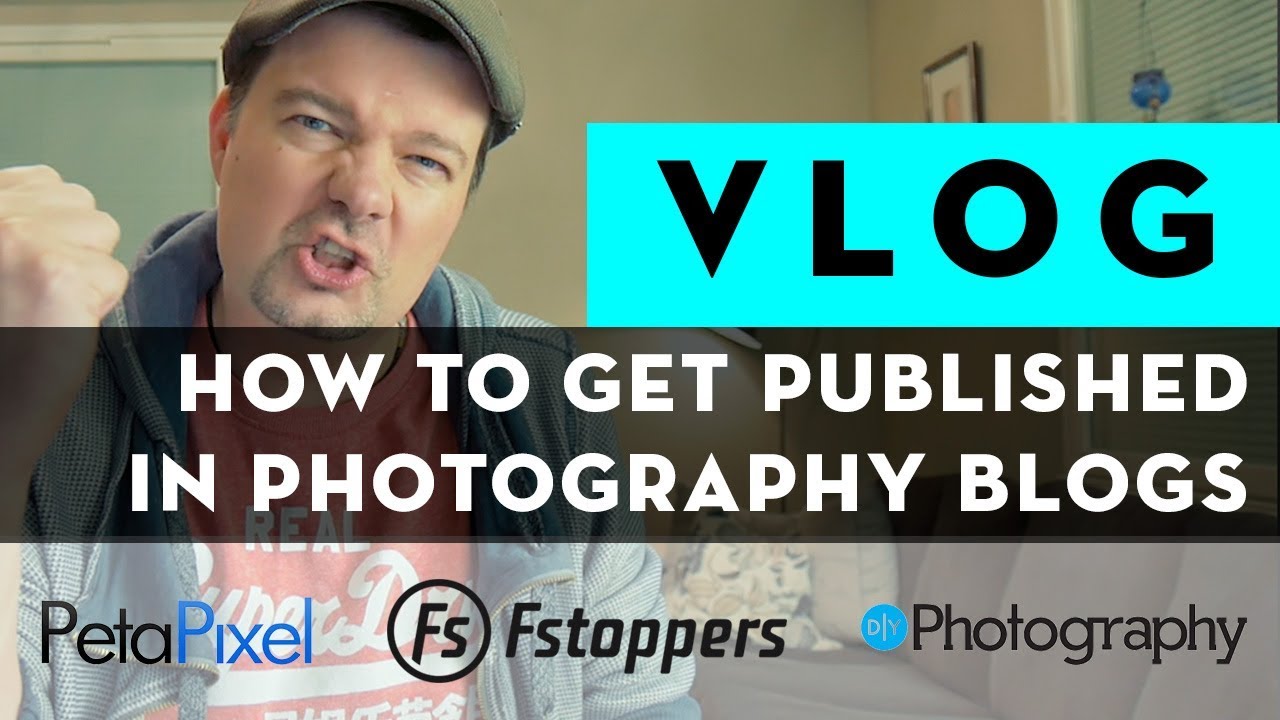If you're a photographer and looking to reach a wider audience, Getty Images might just be the perfect platform for you. Established in 1995, Getty Images has grown to become one of the world's leading stock photo agencies, with a vast collection of images that cater to various needs—from editorial content to creative projects. By publishing your photos on Getty, you can tap into a global marketplace and showcase your unique perspective to clients, magazines, and businesses. Let’s dive deeper into what makes
Benefits of Publishing on Getty Images

Publishing your photos on Getty Images offers a plethora of advantages that can significantly enhance your photography career. Here are some key benefits:
- Global Exposure: Getty Images serves a vast array of clients worldwide, allowing your work to reach audiences that might be impossible to connect with otherwise.
- Credibility and Trust: Being featured on a reputable platform like Getty adds a level of credibility to your work. Clients trust the quality of content sourced from it, which can lead to more sales.
- Attractive Revenue Potential: Getty Images offers competitive rates for photographers. Every time someone uses your image, you earn a percentage, creating a potential for passive income.
- High-Quality Standards: Getty has strict quality control measures in place, which means your work will be presented alongside other high-caliber photos. This raises the overall standard of your portfolio.
- Feedback and Insights: The platform provides analytical tools that help you understand how your images perform. This data can provide insights into what types of images are popular and guide your future work.
For many photographers, one of the most appealing aspects is the ability to license images for various uses, including editorial, advertisements, and corporate materials. Here’s a closer look at some additional benefits:
1. Diverse Market Opportunities: Whether you shoot landscapes, portraits, or niche subjects, Getty Images caters to a wide variety of market needs. This diversity allows you to experiment with different types of photography while still presenting a cohesive portfolio.
2. Promotion and Marketing: By partnering with Getty Images, you're not just putting your photos up for sale; you're also leveraging their extensive marketing efforts. They actively promote their collection, which means your images can gain traction without you having to spend a dollar on advertising.
3. Community and Networking: Joining a platform like Getty Images also connects you with other professionals in the industry. You can learn, get inspired, and perhaps even collaborate with other artists.
In summary, publishing your photos on Getty Images is more than just a strategy for income; it's a gateway to growth, recognition, and opportunity in the vast world of photography. By harnessing the power of Getty's platform, you're setting yourself up to thrive in your photographic journey.
Also Read This: Inside Look at Alamy Platform
3. Preparing Your Photos for Submission
When it comes to submitting your photos to Getty Images, preparation is key! You want your images to stand out, and this begins long before you hit that upload button. Here are some essential tips to ensure your photos are ready for the spotlight:
- Choose the Right Photos: Not all images are created equal. Select photos that are high-quality, well-composed, and tell a story. Think about what buyers might be looking for—whether it's commercial appeal, editorial relevance, or artistic uniqueness.
- Image Quality Matters: Ensure that your photos are sharp, properly exposed, and noise-free. Aim for high-resolution images, ideally at least 300 DPI. This is crucial since buyers need high-quality options for print and digital use.
- Edit with Care: Post-processing is your chance to enhance your photos. Use editing tools to adjust brightness, contrast, and color balance, but avoid heavy-filter overuse. The goal is to make your images pop while keeping them natural and true to life.
- File Format and Size: Save your images in an appropriate format, typically JPEG at high quality. Ensure the file size adheres to Getty's requirements, striking a balance between clarity and upload efficiency.
- Keywording and Descriptions: Take time to craft thoughtful keywords and descriptions for each image. Use relevant keywords that accurately describe the content and context of your photos, allowing potential buyers to easily find and engage with your work.
By putting in the effort to prepare your images properly, you’ll save both yourself and the Getty review team time. Well-prepared submissions not only increase your chances of getting accepted but also help your photos get noticed once they’re in the system.
Also Read This: A Complete Guide to Selling Images on Getty Images
4. Creating a Getty Images Contributor Account
Now that your photos are polished and ready for submission, the next crucial step is to create a Getty Images Contributor account. This account will serve as your gateway to sharing your work with the world. Here’s how to get started:
- Visit the Getty Images Contributor Site: Head over to the Getty Images Contributor page. You’ll find options to join or log in if you’ve already created an account.
- Sign Up: Click on the 'Apply to be a Contributor' button. You’ll be asked to provide some basic information about yourself, such as your name, email, and location. Make sure to use a valid email you check regularly, as this will be your primary mode of communication.
- Accept the Contributor Agreement: Before your account can be activated, you’ll need to agree to Getty's Contributor Agreement. This document outlines their terms and conditions, including aspects of licensing and royalties. Make sure to read it thoroughly—knowledge is power!
- Profile Setup: Once your application is accepted, take some time to set up your profile. Upload a professional photo of yourself, add a short bio, and share any relevant links to your portfolio or social media. A well-designed profile can help you capture the attention of potential buyers.
- Prepare for Submission: After your account is created, you'll be able to start uploading your photos! Familiarize yourself with the platform's interface, including how to submit your images, add metadata, and check the status of your submissions.
Creating a Getty Images Contributor account is a straightforward process, but it's worth taking your time to fill out each section thoughtfully. This becomes your personal storefront, so make sure it reflects your brand and work effectively. Happy submitting!
Also Read This: How to Download Getty Images Without Watermark (2019 Version): Updated Methods to Remove Watermark from Getty Images
5. Steps to Upload Your Photos
Now that you’ve selected the perfect photos to showcase, the next step is uploading them to Getty Images. While it may seem daunting, breaking it down into simple steps can make the process a whole lot easier. Let’s walk through the steps for getting your images online in no time!
- Create a Getty Images Contributor Account: Before you can upload your photos, you need to sign up as a contributor. Visit the Getty Images website and follow the prompts to create your account. Be sure to provide accurate information, as this will be crucial for your future payments and tax purposes.
- Access the Contributor Dashboard: Once your account is set up, log in to your contributor dashboard. This is your command center where you can manage your uploads, check sales, and monitor your performance.
- Upload Your Images: Look for the “Upload” button in your dashboard. You’ll be able to drag and drop files or select them from your computer. Remember, JPEG is the accepted file format, so if you work in RAW or other formats, export your images as JPEGs before uploading.
- Batch Uploading: If you have multiple photos, consider batch uploading to save time. This feature allows you to select and upload several images at once. Just make sure to double-check each one for quality!
- Fill Out the Required Information: After uploading, you'll need to provide essential details for each image. This typically includes the title, description, and tags to help potential buyers find your work easily.
- Review and Submit: Once you’ve filled in all necessary fields, take a moment to review your entries. Make sure everything is accurate, then hit the “Submit” button. Congratulations, you’ve successfully uploaded your photos!
And there you have it! These straightforward steps will help you get your images from your computer to the Getty Images platform efficiently. Every upload is a step toward building your portfolio and achieving your photography goals!
Also Read This: How to Make a Photo Exclusive on Getty to Maximize Your Earnings
6. Best Practices for Tagging and Describing Your Work
Now that your photos are uploaded, it’s crucial to make them discoverable. Good tagging and descriptions can greatly increase the visibility of your work on Getty Images. Here are some best practices to ensure you are optimized for searches:
- Be Specific: When crafting your tags and descriptions, specificity is key. Instead of using generic tags like "nature," try “sunset over ocean” or “lush green forest.” The more specific you are, the more likely your photo will be found by someone searching for that exact image.
- Use Keywords Wisely: Think about the keywords potential buyers might use in their searches. Research trending keywords related to your niche and incorporate them into your tags and descriptions. Tools like Google Trends can help identify popular search terms.
- Maximize Your Tag Limit: Getty Images allows a certain number of tags per image. Use as many as you can to cover all angles and aspects of the image. This strategy enhances chances of appearing in relevant searches.
- Provide Context: Your description matters! Use this opportunity to tell a story about the photo. Include details about when and where it was taken, the equipment used, or any interesting anecdotes. A compelling story can make your photo more appealing and relatable.
- Consider Buyer Needs: Always think from the perspective of the buyer. What would they want to know? How would they use the image? Tailor your tags and descriptions to meet those potential needs, whether for advertising, editorial, or personal use.
By focusing on these best practices for tagging and describing your work, you increase your chances of being found by potential buyers on Getty Images. Remember, every detail counts, so take the time to refine your submissions. Happy tagging!
Also Read This: How to Get HQ Getty Images for Your Professional Use
7. Understanding Getty Images' Licensing and Pricing Models
When it comes to publishing your photos on Getty Images, understanding their licensing and pricing models is crucial. If you’re serious about selling your work, you need to know how it all works and how it affects your earnings. Here’s a breakdown to help you navigate the intricacies:
- Rights Managed (RM): This model allows you to set specific prices based on factors like usage, territory, and duration. It's perfect for unique images or those with high demand, as you can charge more based on the client’s needs.
- Royalty-Free (RF): Under this model, buyers can use your photos multiple times without paying each time. Getty Images typically determines the price based on the size of the image and its resolution, making it a straightforward option for buyers.
- Exclusive vs. Non-Exclusive: Decide whether you want to license your images exclusively or non-exclusively. An exclusive license usually brings higher fees but limits how many other buyers can access that image.
Each model has its own pros and cons:
| Model | Pros | Cons |
|---|---|---|
| Rights Managed | Higher potential earnings, tailored pricing | More complexity, requires negotiation |
| Royalty-Free | Easier to sell, predictable pricing | Lower earnings per image, image can be overused |
In your Getty Images dashboard, you’ll be given insights on how to price your images. Make sure to pay attention to trends and observe what similar images are being sold for. This will help you gauge competitive pricing—after all, the right number can make a significant difference in your overall sales!
Lastly, don’t forget to keep up with trends in the industry. Knowing what types of images are in demand can help you make informed decisions about what to shoot and how to price it. The licensing and pricing models at Getty Images are designed to benefit both photographers and buyers, but it's essential to familiarize yourself with the details to ensure you maximize your earnings.
Also Read This: Understanding Earnings Potential on Adobe Stock
8. Marketing Your Photos on Getty Images
So, you've got your images uploaded and ready to go on Getty Images. What’s next? Marketing is essential to ensure your photos get the visibility they deserve. Here are some effective strategies you can implement to boost your exposure:
- Optimize Your Keywords: Use relevant keywords when tagging your photos. This not only helps users find your work but also enhances your image’s discoverability in search results.
- Create a Compelling Profile: Take time to develop an engaging artist profile. Include a biography, your specialties, and a link to your portfolio. A strong presence can attract buyers and make your work more appealing.
- Engage with Trends: Stay on top of visual trends and cater to what’s currently popular. Seasonal themes and current events often drive demand, so consider tailoring your submissions to align with these themes.
- Utilize Social Media: Share your Getty Images portfolio on platforms like Instagram, Facebook, and Twitter. Create engaging posts that showcase your images and draw potential buyers to your Getty page.
Additionally, consider collaborating with other photographers or creatives. Joint projects can help you tap into new audiences and give your work additional exposure.
Lastly, don't forget to leverage the power of storytelling. When you share your photos, tell the story behind them. Why did you take that particular shot? What inspired you? Creating an emotional connection can make your work memorable and encourage people to buy.
In conclusion, marketing your photos on Getty Images is not just about uploading your work. It's about making strategic moves that will get your creations in front of the right eyes. With the right approach, you can enhance your visibility and increase your chances of making sales!
Also Read This: Getting Getty Images for Free Through Alternative Methods
9. Monitoring Your Sales and Analyzing Performance
Now that you've uploaded your stunning images onto Getty Images, one of the most critical steps in your photography journey is keeping an eye on your sales and understanding how your photos are performing. This not only helps you gauge what type of images resonate with buyers, but it also allows you to tweak your strategy for maximum impact.
Why is Monitoring Important?
- Sales Insights: Knowing which images sell can guide your future shoots and submissions.
- Market Trends: Understanding what’s currently in demand helps you stay ahead of competitors.
- Feedback Utilization: You can learn from your performance metrics to enhance the quality of future work.
To effectively monitor your sales, Getty Images provides a user-friendly dashboard where you can track your earnings and view sample sales reports. Here are a few key metrics to pay attention to:
- Total Sales: Keep track of how much money you’re making over time. A steady increase is a great sign!
- Individual Image Performance: Some images may perform better than others. Take note of the top sellers and the reasons why they might be appealing.
- Licensing Types: Check which licensing options (e.g., rights-managed, royalty-free) are more popular among buyers.
Don't forget to engage with your data! Trying to draw conclusions from raw numbers can be overwhelming, so consider taking notes or even using spreadsheets to organize your findings. After a few months, review your performance regularly to identify patterns and set new goals.
Ultimately, this analytical approach will empower you not only to shape your portfolio but also to steer your photography career in the direction you want it to go. Remember, the more you know about your audience and sales strategies, the better armed you'll be to meet their needs!
10. Conclusion: Taking Your Photography Career to New Heights
Congratulations! By following the steps outlined in this guide, you’re well on your way to publishing your photos successfully on Getty Images. But let’s take a moment to reflect on what this really means for your photography career.
Publishing on a platform like Getty Images is not just about selling pictures; it’s about building a brand and a presence in the vast world of visual storytelling. Here are a few final thoughts to consider as you embark on this exciting journey:
- Stay Consistent: The key to long-term success is consistency. Regularly upload new work and engage with your audience. This will keep you relevant and in the minds of buyers.
- Keep Learning: Photography is an ever-evolving field. Stay updated on new techniques, styles, and market demands to improve your work continuously.
- Network: Connect with other photographers, attend workshops, and participate in online communities. Networking can lead to collaborations and inspiration you didn’t see coming.
As you dive deeper into the world of stock photography, remember that every photo tells a story. Your journey in photography is about sharing your unique perspective, and there’s an audience eager to see what you bring to the table. With passion, persistence, and a clear strategy, the sky's the limit!
Now, get out there, capture those breathtaking moments, and let your creativity flourish. Here’s to taking your photography career to greater heights!
 admin
admin








